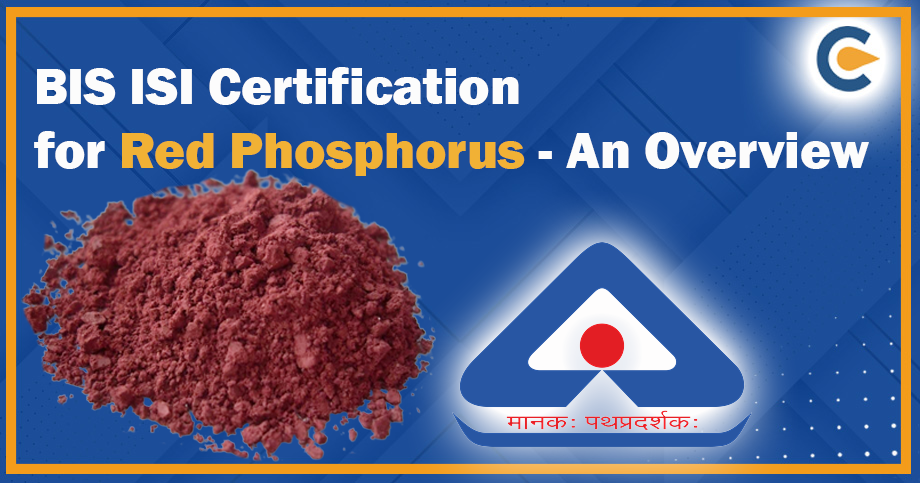Launching quality products into the market is the responsibility of every manufacturer. They must have a refined production process and testing capabilities to make their products compliance-ready. BIS registration serves as a standalone certification that enables manufacturers to produce safer and quality products. Securing BIS registration is a way to augment product quality to a new level. In this blog, you will discover how to secure BIS Certification for PPE Occupational Footwear and the norms around the same.
But first, let’s talk about the legislation that governs such footwear types.
What Is The Use Of Occupational Footwear?
Occupational footwear goes by its name as it is used by the wearer who works in an environment prone to injury. It protects the wearer’s foot from being injured caused by accidents. These shoes are broadly used in the industrial sphere by employees who are involved in production undertakings.
IS 15298 (Part 4):2017 for Occupational Footwear
How occupational footwear should be manufactured, and what characteristics it must have is governed by the standard namely- IS 15298 (Part 4):2017. Safety footwear employs toecaps designed to withstand severe blows caused during the work. As per the standard, toecaps should remain intact when subjected to a compression force of at least 15 KN and an impact amounting to at least 200 J.
Classification of footwear: The standard classifies occupational footwear in the manner shown in the following table.
| Code designation | Classification |
| I | Footwear constructed via the leather and other materials. This does not include all-rubber or all-polymeric footwear |
| II | All-rubber (i.e. entirely vulcanized) or all-polymeric (i.e. entirely molded) footwear |
The construction material and design of the occupational footwear should align with the requirements of IS 15298 Part 4: 2017. Based on how much risk threshold exist in the workplace, occupational footwear may employ added safety and improved design as per what standard recommends. For those seeking the BIS license for both code designations, separate application filing is the only solution.
Tests to Qualify For BIS Certification for PPE Occupational Footwear
Manufacturers seeking a BIS certificate are required to qualify following tests for their product(s). That’s the only way to become eligible for ISI marking.
- Tear Strength Test
- Flexing Resistance Test
- Tensile Test
- pH Value Test
- Water Vapour Permeability And Coefficient Test
- Abrasion Resistance Test
- Dimension Test
- Chromium VI Content Test
Labelling Norms under BIS for PPE Occupational Footwear
Labelling is an important pillar of BIS ISI registration. Products that passed the aforesaid tests can bear the ISI marking. As per the standard, the finished occupational footwear must explicitly reflect the following:
- Shoe Size
- Manufacturer Identification Mark
- Production Year
- European Standard Number And Year
- ISI Marking
The Standard Mark (ISI Mark) helps customers with genuine product selection. The legible ISI marking vouches for the product’s quality. Without a valid registration, the manufacturer cannot affix their product with the ISI mark.
After applying for the license, the BIS will thoroughly vet the applicant firm on various technical grounds such as production capabilities, testing capabilities, and so on.
Documents Needed For BIS Certification for PPE Occupational Footwear
As with other government registration and permits, documentation also plays a key role in the BIS registration process. Following are the documents required for BIS Certification for PPE Occupational Footwear.
- Factory License
- Documents Concerning Business Registration
- Lab Equipment Detail
- Pollution NOC
- Flowchart Depicting The Production Process
- Lab Report Issued By The Certified Lab
- Details Of Machines Used For Shoe Production
- List Of Products Needing BIS Registration
- An Authorization Letter For Agent Hired To File The Application
- Trademark Registration If Available
Procedure to Get BIS Certification for PPE Occupational Footwear
Once you are done with the paperwork arrangement, proceed with the next important step, which is application filing. Here’s what the process for the same look like.
Step 1: Application Filing On the BIS Website
Hop onto the BIS portal[1] and explore the section where the ISI marking scheme is located. Next, open the application and fill in the same with information as cited in the form.
Thereafter, head to the document section to upload the aforesaid paperwork. Once done, navigate to the payment section for fee submission.
Note: No two different products can be applied through a single application for a BIS registration.
Step 2: Vetting Process
Post application submission, the portal will redirect the same to the concerned department of the BIS, which performs the vetting process.
The scrutiny conducted by the officials involves various steps such as paperwork vetting, on-site inspection, and sample collection.
While performing the on-site vetting, the officials will take a closer look at the following:
- Manufacturing Infrastructure
- Testing Capabilities
- Production Process
- Standard(S) Being Followed
This will immediately be followed by the sample collection process, in which officials will pick some specimen (finished products) from the production lot for lab testing.
Step 3: Lab Testing and Report Preparation
The officials will get in touch with the certified lab and prompt it to measure the product performance against the following tests:
- Tear Strength Test
- Flexing Resistance Test
- Tensile Test
- pH Value Test
- Water Vapor Permeability And Coefficient Test
- Abrasion Resistance Test
- Dimension Test
- Chromium VI Content Test
Once these tests reach to their completion, the lab shall proceed for report preparation, in which they will include their remarks, findings, and test outcomes.
Step 4: Report Collection by the Applicant
After being intimated by the lab about the report generation, the applicant must collect the same on time and share it with the authority as soon as possible.
The report generated by the lab stays valid for a couple of weeks. So, be mindful of this important fact.
Step 5: Final Review and Grant of BIS License
This is the final step of the BIS registration process, in which the authority shall review the lab report to ascertain whether or not the product has qualified for ISI marking.
Conclusion
BIS registration is a must-have license for manufacturers of safety footwear. It differentiates quality products from generic ones, enabling customers to make worthwhile purchases every time.
For most manufacturers, securing a BIS ISI license is a way to cope with the ever-rising market competition because it lends the required credibility and distinct identity to the products.
By making this certification an absolute mandate, Government attempts to harmonize how products are being manufactured and sold in the market.
Also Read:
What Is BIS Certification In India?
How To Obtain BIS Certification In India?
BIS Certification For Rubber Hawai Chappals: Process Explained













